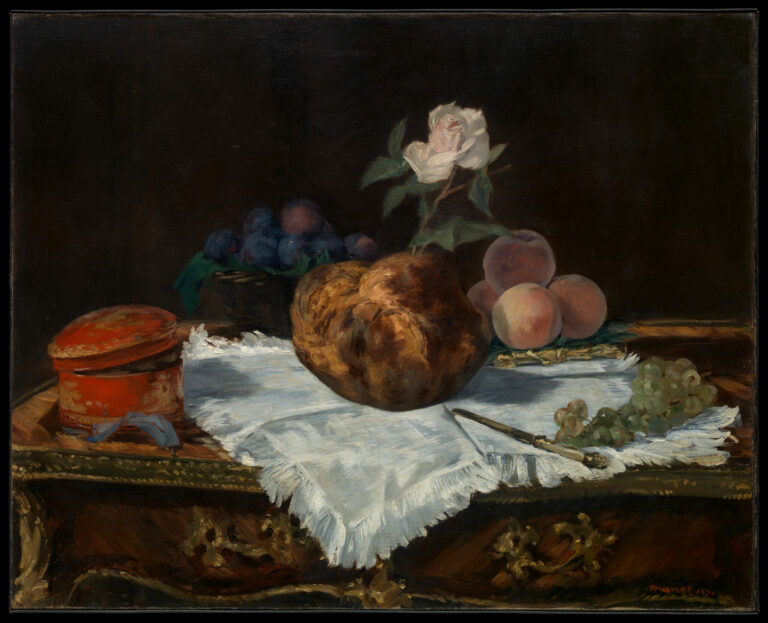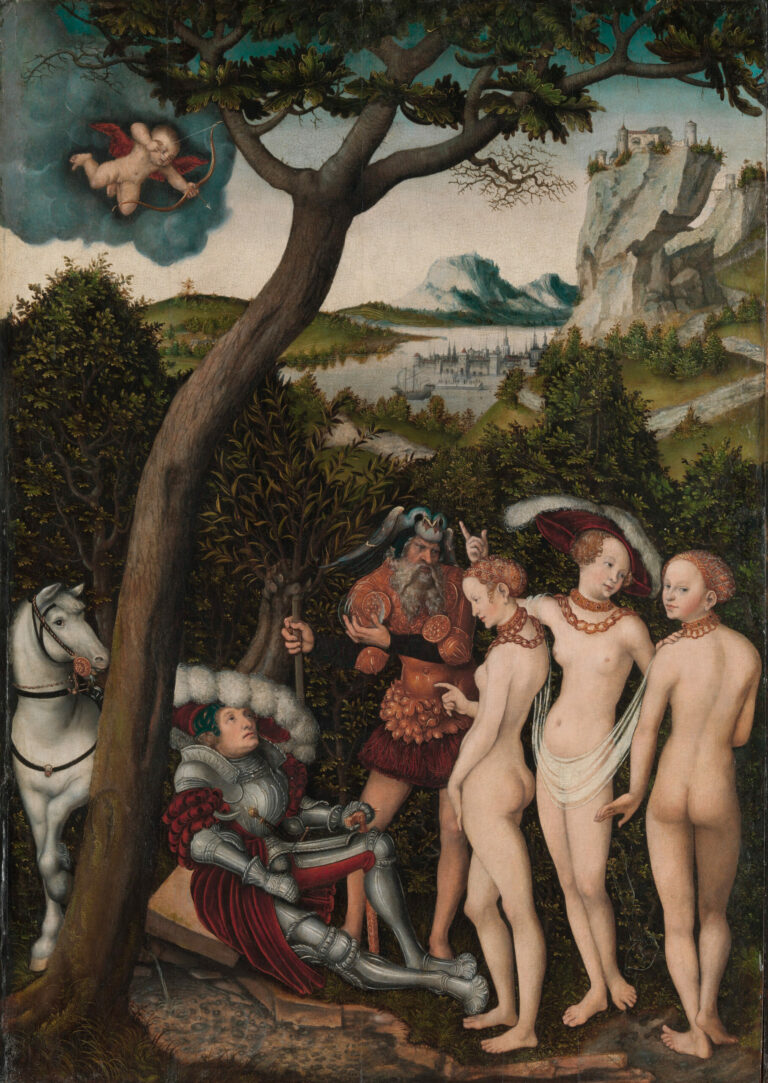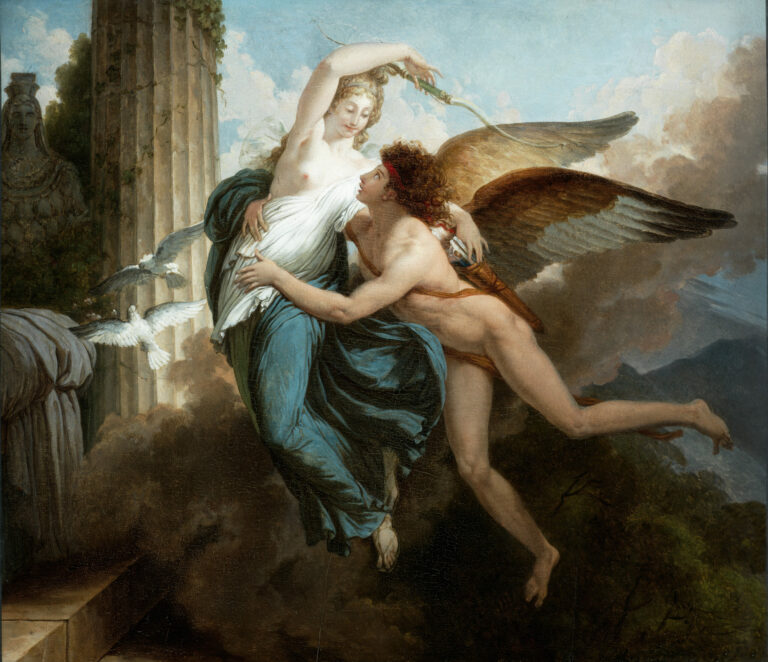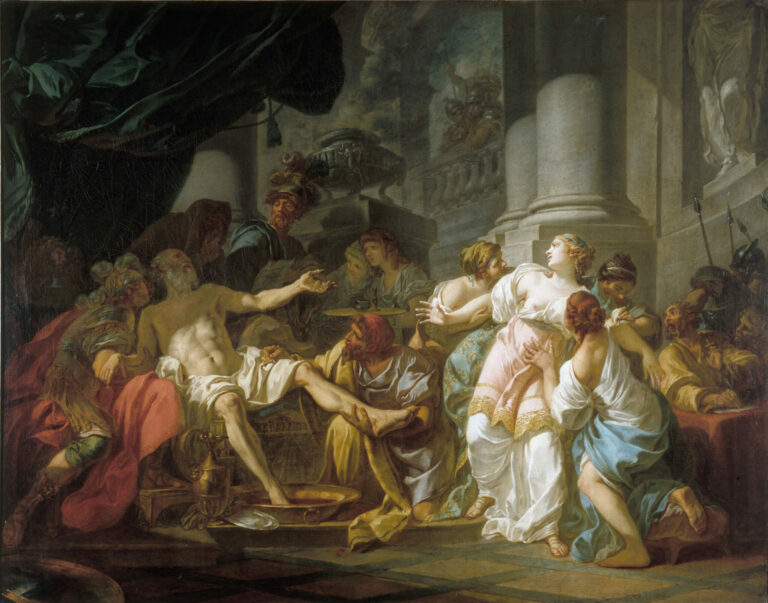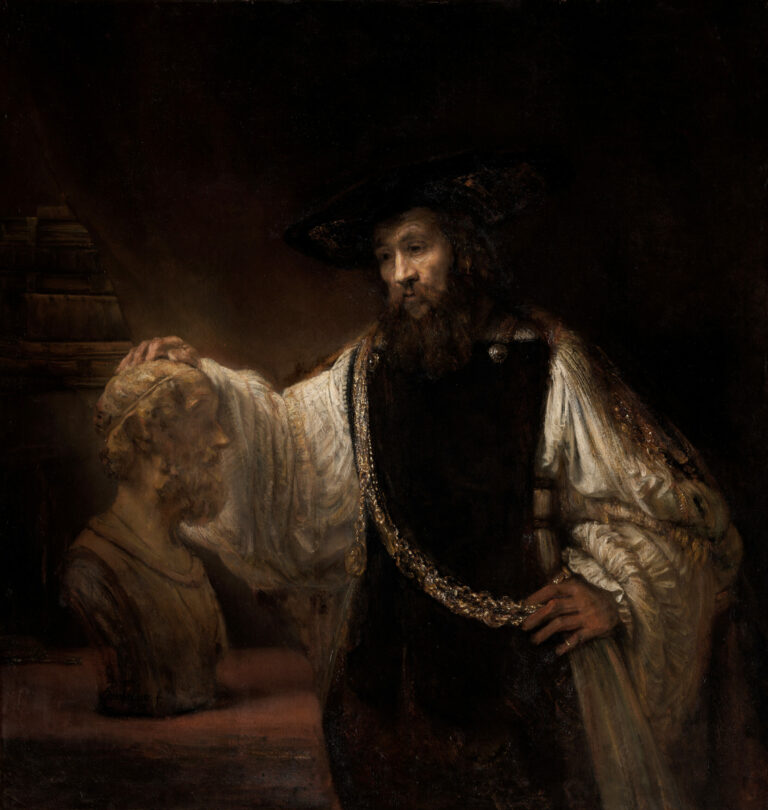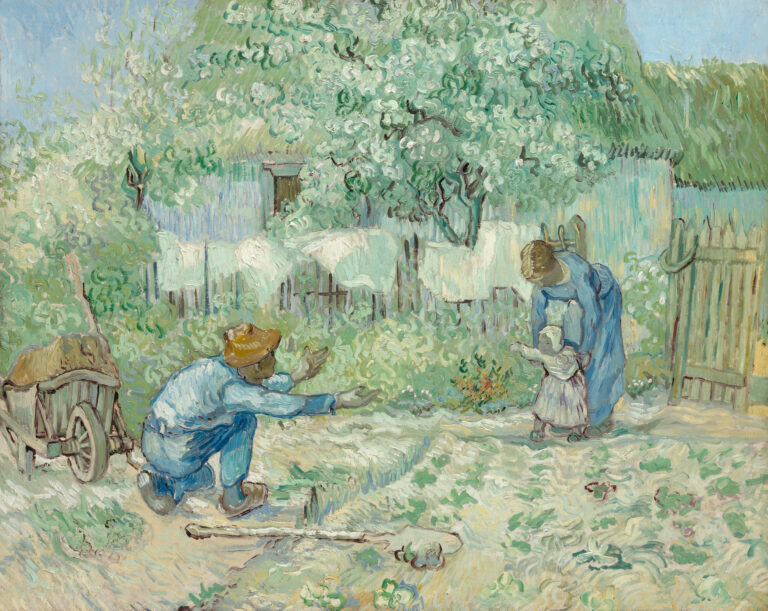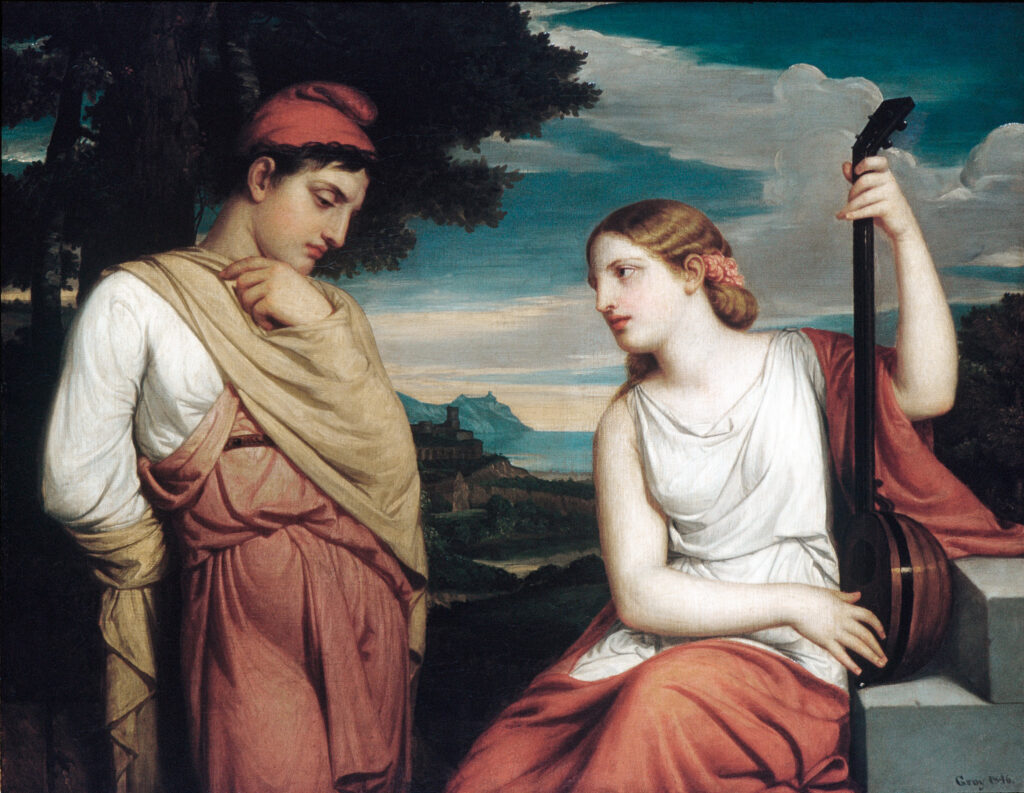
A Suspended Moment of Classical Passion. Henry Peters Gray’s “The Greek Lovers” (1846) transports viewers into a world of ancient passion delicately balanced between desire and melancholy.
Against an azure sky streaked with clouds, two figures share an intimate moment of contemplation. On the left, a pensive young man draped in warm ochre and coral tones appears lost in troubled reflection. Facing him, a woman of classical beauty, clothed in a white tunic with scarlet drapery, gracefully holds a lyre—perhaps poised to offer a consoling melody.
Gray masterfully employs contrast throughout the composition—the contemplative man against the attentive woman, warm tones against the coolness of white drapery. The balanced composition, delicate modeling of figures, and misty Italian landscape reveal a neoclassical sensibility infused with Romanticism. The artist presents an idealized vision of Greek love, both noble and tinged with gentle melancholy, where the silent dialogue between gazes invites viewers to imagine their story.
Additional Information
- Title: Greek Lovers
- Artist: Henry Peters Gray
- Date: 1846
- Dimensions: 102.2 x 130.8 cm
- Location: The Metropolitan Museum of Art, Fifth Avenue, New York (not currently on view)
- https://www.metmuseum.org/art/collection/search/10966
Henry Peters Gray (1819-1877) was a prominent American painter who studied under Daniel Huntington before perfecting his technique in Europe. His journey through Italy proved decisive in the evolution of his style, as evidenced in “Greek Lovers,” where he brilliantly integrates influences from the Italian Renaissance in his warm palette and classical treatment of figures.
As a distinguished member of the National Academy of Design in New York, which he presided over twice, Gray developed a body of work primarily focused on allegorical, mythological, and historical subjects. This canvas perfectly reflects the 19th-century fascination with Greco-Roman antiquity, a theme that resonated strongly with American audiences seeking european cultural references.

